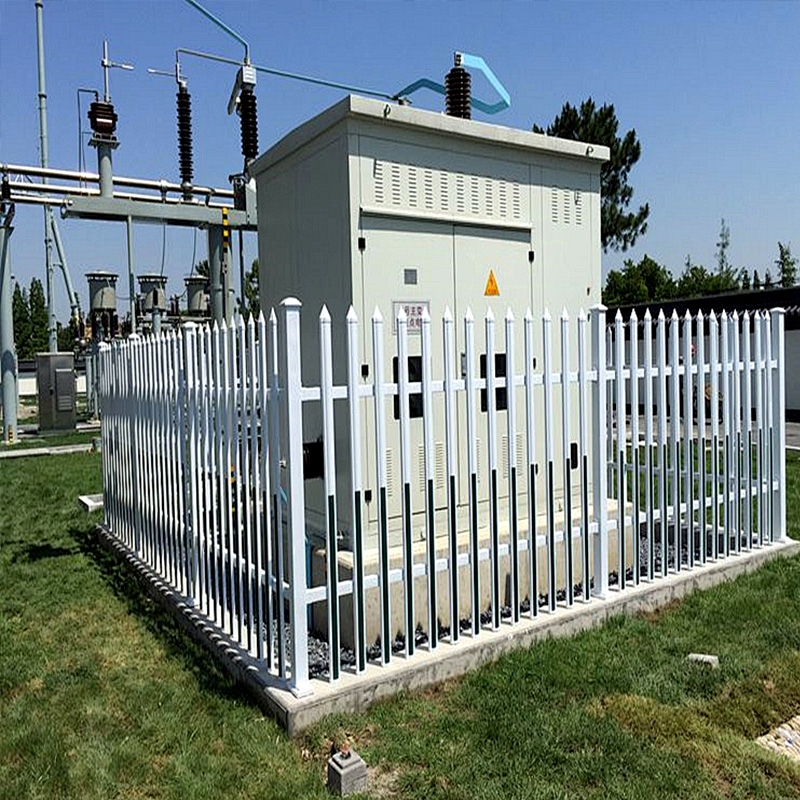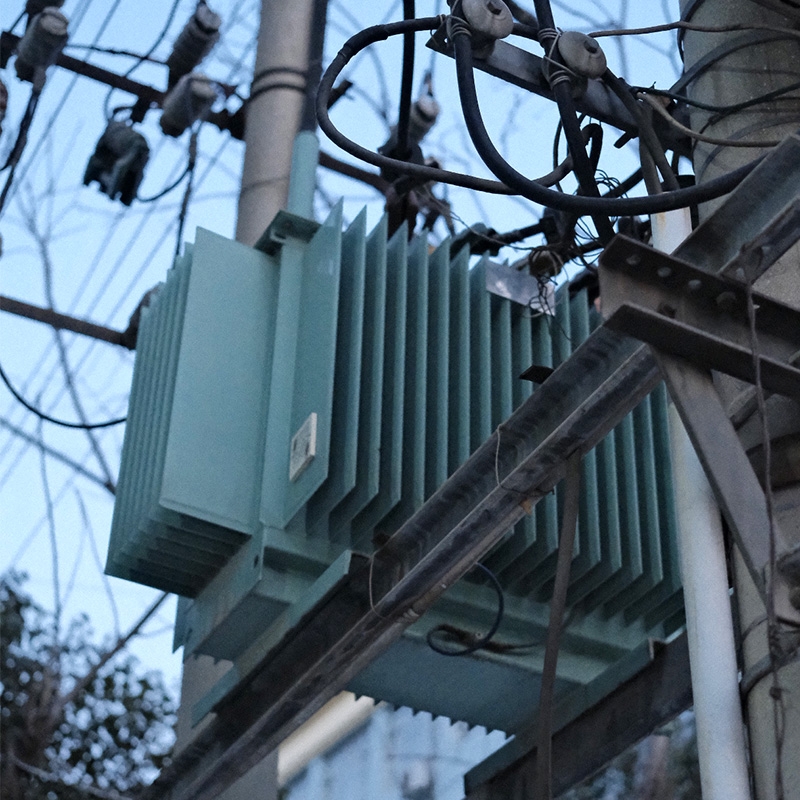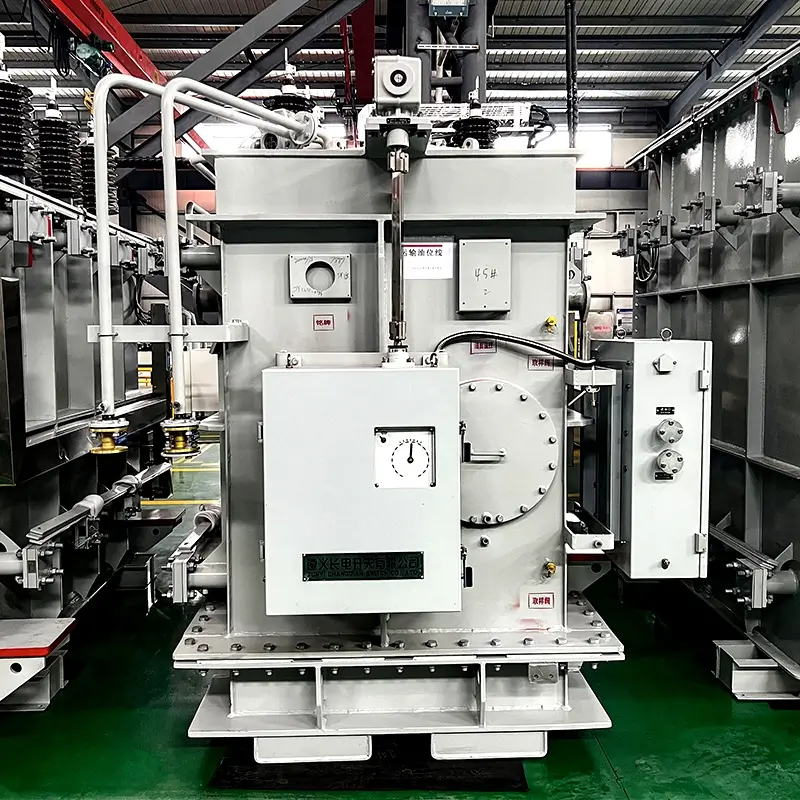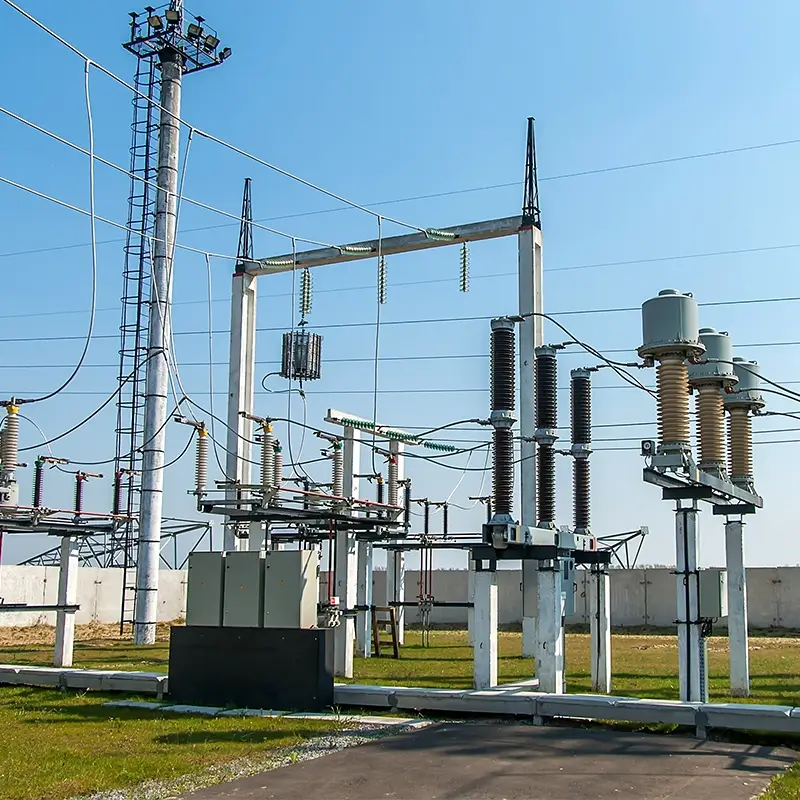Cycle and project contents of inspection, cleaning, maintenance and test of low-voltage distribution equipment
1) Whether the total load and each branch load correspond to the indicated value of the instrument, whether the three-phase load is balanced, whether the three-phase voltage is balanced, and whether the voltage drop at the end of the circuit exceeds the requirements.
2) Whether the connection points of each part (including the bus connection points) are overheating, whether the nuts are loose or falling off, and whether the phenomenon of black; There is no abnormal ringing or odor or burnt taste in each part of the whole device; Whether the surface of the device and electrical appliances is clean and complete, and whether the ground connection is normal and good. 3) There is no damage, skew or discharge phenomenon and traces of the insulator, and the busbar fixing clip is loose; Vulnerable to external vibration and dusty places, should check the electrical equipment of the protective cover, arc cover loose, whether clean. 4) Whether the doors and Windows of the low-voltage distribution room are complete, whether the ventilation and ambient temperature and humidity meet the requirements of electrical equipment; When it rains, whether the roof leaks water or whether there are traces of leakage. Whether the protective box of outdoor electrical appliances leaks; Whether the indoor and outdoor maintenance channels are smooth, whether the outdoor road is washed off by rain, etc. 5) Whether the indoor lighting is normal, whether the spare parts meet the needs of operation and maintenance, and whether the safety appliances and portable instruments meet the requirements of use. 6) The setting value of the air switch overcurrent release device, the configuration of the heat element, whether it matches the load, and whether it can meet the protection requirements; Whether the solenoid coil of the circuit breaker and contactor is normally drawn, and whether there is excessive noise or coil overheating. 7) Load peak, abnormal weather or accidents and overload operation should be carried out special inspection: ① electrical equipment connection points, wiring points are serious heat, there is no burnt taste. ② After rain, check whether the room is flooded or leaked, whether the cable trench is flooded, and whether the porcelain insulation is flashover or discharge. ③ After the accident of the equipment, focus on checking the operation of the fuse and protection device, and whether the equipment within the scope of the accident is burned or damaged, and whether there are other abnormal conditions.
02 Cleaning and maintenance items, cycle and requirements of various low-voltage electrical appliances
1) The cleaning and maintenance of low-voltage distribution devices should generally not be less than twice a year. In addition to cleaning and rolling insulation, it mainly checks the fastening of the connection points and ground points of each part and whether the electrical components are damaged or lack of function, and should be properly handled one by one.
2) The knife switch with load switching should check the contact once every six months, and apply neutral petroleum jelly to the knife gate.
3) Frequent operation of the AC contactor, check the contact at least once a quarter and clean the arc interrupter, measure whether the DC resistance of the suction coil meets the specified value.
4) Whether the pressure spring of the main contact of the air breaker and contactor fails due to overheating, otherwise it should be replaced.
5) Check whether the middle line of the air switch and the dynamic and static contacts of the contactor are consistent, and whether the three phases are synchronized, and adjust the contact spring to make the three phases consistent. The insulation resistance between phase and phase should meet the requirements.
6) Check the contact pressure of the circuit breaker and contactor contacts, and test the distance between the static and static contacts when the switch is disconnected, which should comply with the regulations.
7) Check the wear or burn of the air switch and contactor contacts. If the wear thickness is greater than 1mm, it should be replaced; Arc burn severe should be polished, grinding usually should pay attention to the three corresponding consistent.
8) Check whether the suction condition of the solenoid coil of the circuit breaker and contactor is good, and there is no noise, overheating or dislocation. Whether the short-circuit ring is intact, loose, and falling off; Whether the coil insulation is damaged. Whether the rolling test is qualified; Whether the terminal is in good contact.
9) Check whether the suction voltage of the suction coil of the contactor can work reliably at 85% to 105% of the rated voltage; When the voltage is below 4%of the rated value, can it be reliably released?
10) Verify the suction voltage of the shunt trip device and the no-voltage trip coil of the air switch, whether it can work reliably at 75%- 105% of the rated voltage; Reliable release when the voltage is below 40% of the rated value.
11) Package-free fuses should be checked once a quarter to tighten the socket edge and fuse connection points, and the socket edge should be coated with neutral petroleum jelly oil: after the fuse accident action, the internal burning situation of the fuse should be checked, carbon accumulation should be removed, and it should be replaced if necessary.
12) Three-phase or single-phase rubber cap gates, porcelain plug fuses, fast screw fuses, etc. should be installed correctly and in line with the environment. Check once a week whether the contact between the power cord and the load line and the switch or fuse, and whether the contact at both ends of the fuse is loose, and tighten it once, and check whether the selection of the fuse matches the actual load.
13) Check whether the auxiliary contacts and relay contacts of low-voltage electrical appliances are burned, blocked, wiring off or poor contact, and whether the current through exceeds the rated value.
14) Check whether there is overheating or loosening at the connection point of the air switch and the contactor and starter thermal element, whether the ambient temperature of the thermal element is consistent with the ambient temperature of the protected equipment, and whether the specification of the thermal element matches the load.
15) The insulation resistance of the bus bar of the low-voltage distribution device should not be less than 100M with the 500V shake meter; The insulation resistance of circuit breaker, tool brake, contactor, transformer and starter shall not be less than 10M; The insulation resistance of the secondary wire to the ground should not be less than 2M.
16) When the secondary general control of the transformer uses an air switch or the inlet line of the low-voltage distribution device uses an air switch, the upcurrent test should be done during maintenance, and the value should be verified and matched with the upper level protection device.
17) For low-voltage electrical appliances equipped with interlocks, transmission tests should be done to check the reliability and correctness of its action, and check whether its wiring is firm.
18) After the low-voltage air switch is faulty, the contact and arc interrupter should be inspected in time by the opportunity of power failure, to remove the internal dust, metal fine and carbon, and to check whether the overcurrent setting is correct.




